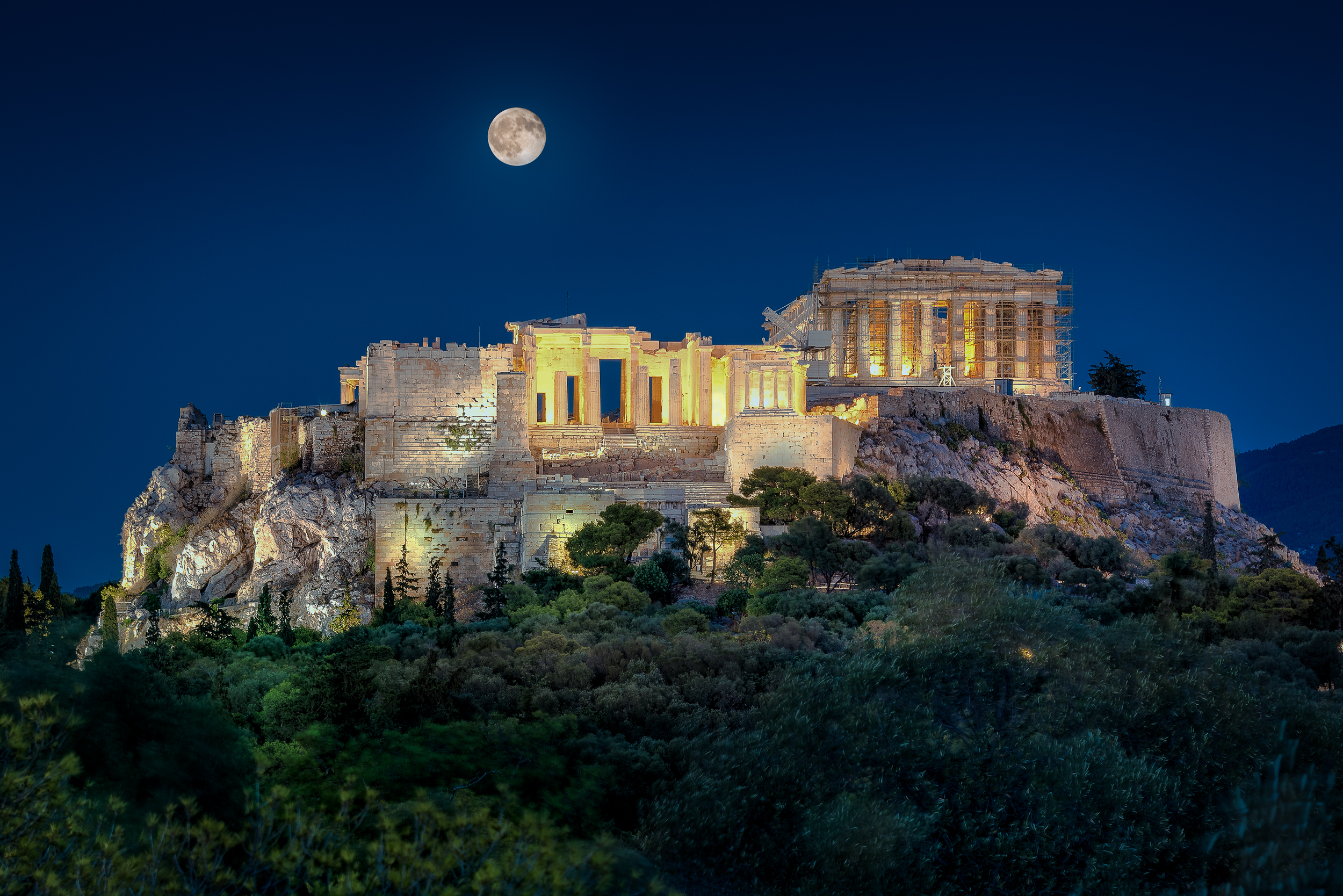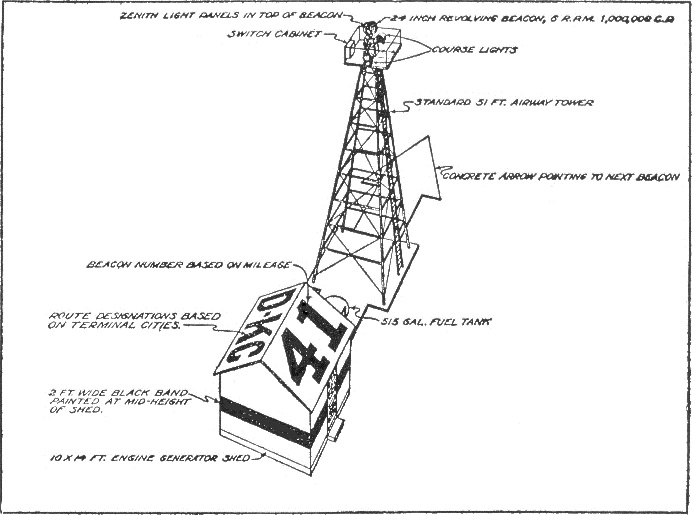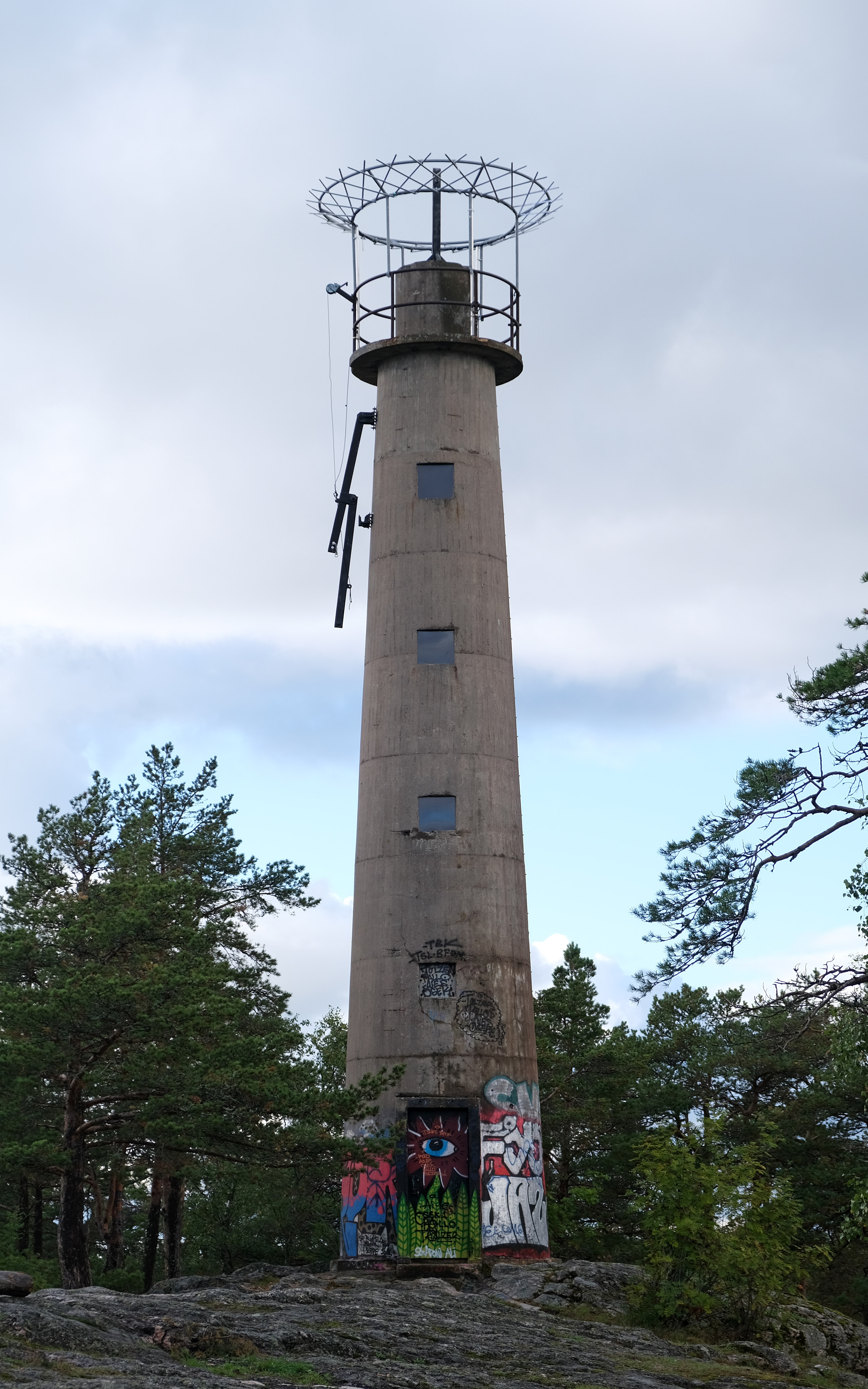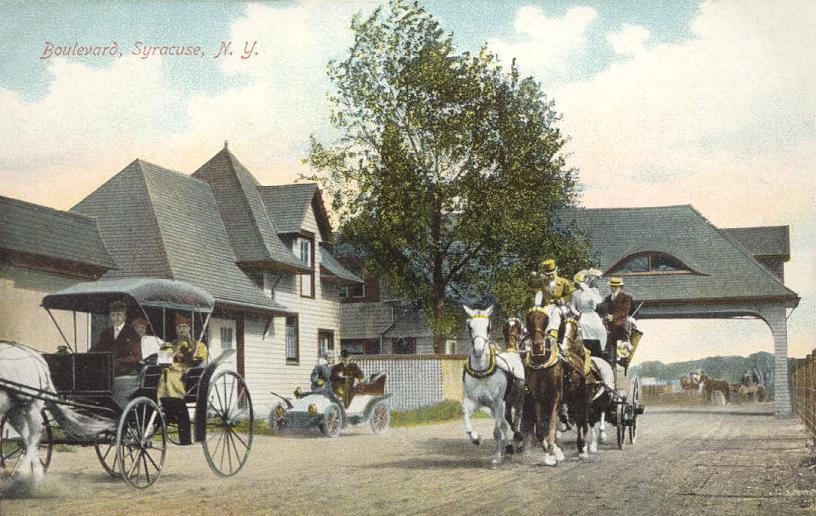|
Aerobeacon
An aerobeacon is a light assembly used to create a fixed or flashing signal visible over long distances. It consists of a high intensity electric lamp mounted with a focusing device in a cylindrical housing, which usually is rotated on a vertical axis by an electric motor. The sweep of the narrow beam thus produced gives the flashing effect. Aerobeacons were originally developed for aviation use, mostly as aerodrome beacons, but they also saw extensive use in lighthouses. They were far less expensive to manufacture and maintain than classic glass Fresnel lenses, and much more durable; they could be mounted and exposed to the weather. Historic models include the DCB-24, which used a single parabolic reflector; the DCB-224, a double-beamed version of the DCB-24; and the DCB-36, which used a system of plastic Fresnel type lenses. Manufacturers included Carlisle & Finch in Cincinnati and the Crouse-Hinds Company in Syracuse, New York. Aerobeacons have replaced fragile glass Fresnel l ... [...More Info...] [...Related Items...] OR: [Wikipedia] [Google] [Baidu] |
Automatic Bulb Changer
An automatic lamp changer (or lampchanger) is a device used to ensure that a navigational light such as a marine lighthouse or aero beacon stays lit even if a bulb burns out. Numerous types exist. The common design elements are an array of two or more lamps (or bulbs), installed on a mounting which can rotate to various positions. Each position brings a different lamp into the focal point of an optical assembly. Since signal and navigational lights use sophisticated optics to focus the beam, lampchangers are designed to position the new bulb at the focal point with high precision. The device automatically detects when the currently active lamp has ceased to function and moves the next lamp into place. History The automatic lampchanger was invented by Charles Wallace and patented in 1928. This original model held two headlight lamps from a Model T automobile. The United States Lighthouse Service had these in common use by the 1930s, as they moved to convert all navigational lights ... [...More Info...] [...Related Items...] OR: [Wikipedia] [Google] [Baidu] |
Parabola
In mathematics, a parabola is a plane curve which is mirror-symmetrical and is approximately U-shaped. It fits several superficially different mathematical descriptions, which can all be proved to define exactly the same curves. One description of a parabola involves a point (the focus) and a line (the directrix). The focus does not lie on the directrix. The parabola is the locus of points in that plane that are equidistant from both the directrix and the focus. Another description of a parabola is as a conic section, created from the intersection of a right circular conical surface and a plane parallel to another plane that is tangential to the conical surface. The line perpendicular to the directrix and passing through the focus (that is, the line that splits the parabola through the middle) is called the "axis of symmetry". The point where the parabola intersects its axis of symmetry is called the " vertex" and is the point where the parabola is most sharply cu ... [...More Info...] [...Related Items...] OR: [Wikipedia] [Google] [Baidu] |
Lighting
Lighting or illumination is the deliberate use of light to achieve practical or aesthetic effects. Lighting includes the use of both artificial light sources like lamps and light fixtures, as well as natural illumination by capturing daylight. Daylighting (using windows, skylights, or light shelves) is sometimes used as the main source of light during daytime in buildings. This can save energy in place of using artificial lighting, which represents a major component of energy consumption in buildings. Proper lighting can enhance task performance, improve the appearance of an area, or have positive psychological effects on occupants. Indoor lighting is usually accomplished using light fixtures, and is a key part of interior design. Lighting can also be an intrinsic component of landscape projects. History With the discovery of fire, the earliest form of artificial lighting used to illuminate an area were campfires or torches. As early as 400,000 years ago, fire was ... [...More Info...] [...Related Items...] OR: [Wikipedia] [Google] [Baidu] |
Airway Beacon
An airway beacon (US) or aerial lighthouse (UK and Europe) was a rotating light assembly mounted atop a tower. These were once used extensively in the United States for visual navigation by airplane pilots along a specified airway corridor. In Europe, they were used to guide aircraft with lighted beacons at night. UK and Europe United Kingdom A network of aerial lighthouses was established in the United Kingdom and Europe during the 1920s and 1930s. Use of the lighthouses has declined with the advent of radio navigation aids such as NDB (non-directional beacon), VOR (VHF omnidirectional ranging) and DME (distance measuring equipment). The last operational aerial lighthouse in the United Kingdom is on top of the cupola over the RAF College main hall at RAF Cranwell. Netherlands In the Netherlands, gas holders were painted with an arrow pointing north and two letters identifying their location. United States Approximately 1,500 airway beacons were constructed to guide ... [...More Info...] [...Related Items...] OR: [Wikipedia] [Google] [Baidu] |
Aerodrome Beacon
An aerodrome beacon or rotating beacon or aeronautical beacon is a beacon installed at an airport or aerodrome to indicate its location to aircraft pilots at night. An aerodrome beacon is mounted on top of a towering structure, often a control tower, above other buildings of the airport. It produces flashes similar to that of a lighthouse. Airport and heliport beacons are designed in such a way to make them most effective from one to ten degrees above the horizon; however, they can be seen well above and below this peak spread. The beacon may be an omnidirectional flashing xenon strobe, or it may be an aerobeacon rotating at a constant speed which produces the visual effect of flashes at regular intervals. Flashes may be of one, two, or three alternating colors ( described below). In the United States In the United States, the Federal Aviation Administration (FAA) has established the following rules for airport beacons: Flashing rates # 24 to 30 per minute for beacons m ... [...More Info...] [...Related Items...] OR: [Wikipedia] [Google] [Baidu] |
Aerial Lighthouse
An airway beacon (US) or aerial lighthouse (UK and Europe) was a rotating light assembly mounted atop a tower. These were once used extensively in the United States for visual navigation by airplane pilots along a specified airway corridor. In Europe, they were used to guide aircraft with lighted beacons at night. UK and Europe United Kingdom A network of aerial lighthouses was established in the United Kingdom and Europe during the 1920s and 1930s. Use of the lighthouses has declined with the advent of radio navigation aids such as NDB (non-directional beacon), VOR (VHF omnidirectional ranging) and DME (distance measuring equipment). The last operational aerial lighthouse in the United Kingdom is on top of the cupola over the RAF College main hall at RAF Cranwell. Netherlands In the Netherlands, gas holders were painted with an arrow pointing north and two letters identifying their location. United States Approximately 1,500 airway beacons were constructed to guide ... [...More Info...] [...Related Items...] OR: [Wikipedia] [Google] [Baidu] |
Searchlight
A searchlight (or spotlight) is an apparatus that combines an extremely bright source (traditionally a carbon arc lamp) with a mirrored parabolic reflector to project a powerful beam of light of approximately parallel rays in a particular direction. It is usually constructed so that it can be swiveled about. Military use The first use of searchlights using carbon arc technology occurred during the Siege of Paris during the Franco-Prussian War. The Royal Navy used searchlights in 1882 to dazzle and prevent Egyptian forces from manning artillery batteries at Alexandria. Later that same year, the French and British forces landed troops under searchlights. By 1907 the value of searchlights had become widely recognized. One recent use was to assist attacks by torpedo boats by dazzling gun crews on the ships being attacked. Other uses included detecting enemy ships at greater distances, as signaling devices, and to assist landing parties. Searchlights were also used by battl ... [...More Info...] [...Related Items...] OR: [Wikipedia] [Google] [Baidu] |
Aerodrome Beacon
An aerodrome beacon or rotating beacon or aeronautical beacon is a beacon installed at an airport or aerodrome to indicate its location to aircraft pilots at night. An aerodrome beacon is mounted on top of a towering structure, often a control tower, above other buildings of the airport. It produces flashes similar to that of a lighthouse. Airport and heliport beacons are designed in such a way to make them most effective from one to ten degrees above the horizon; however, they can be seen well above and below this peak spread. The beacon may be an omnidirectional flashing xenon strobe, or it may be an aerobeacon rotating at a constant speed which produces the visual effect of flashes at regular intervals. Flashes may be of one, two, or three alternating colors ( described below). In the United States In the United States, the Federal Aviation Administration (FAA) has established the following rules for airport beacons: Flashing rates # 24 to 30 per minute for beacons m ... [...More Info...] [...Related Items...] OR: [Wikipedia] [Google] [Baidu] |
North Shore Trip - Fall 2012 - Two Harbors Lighthouse (8028642296)
North is one of the four compass points or cardinal directions. It is the opposite of south and is perpendicular to east and west. ''North'' is a noun, adjective, or adverb indicating direction or geography. Etymology The word ''north'' is related to the Old High German ''nord'', both descending from the Proto-Indo-European unit *''ner-'', meaning "left; below" as north is to left when facing the rising sun. Similarly, the other cardinal directions are also related to the sun's position. The Latin word ''borealis'' comes from the Greek '' boreas'' "north wind, north", which, according to Ovid, was personified as the wind-god Boreas, the father of Calais and Zetes. ''Septentrionalis'' is from ''septentriones'', "the seven plow oxen", a name of ''Ursa Major''. The Greek ἀρκτικός (''arktikós'') is named for the same constellation, and is the source of the English word ''Arctic''. Other languages have other derivations. For example, in Lezgian, ''kefer'' can mea ... [...More Info...] [...Related Items...] OR: [Wikipedia] [Google] [Baidu] |
Syracuse, New York
Syracuse ( ) is a city in and the county seat of Onondaga County, New York, United States. It is the fifth-most populous city in the state of New York following New York City, Buffalo, Yonkers, and Rochester. At the 2020 census, the city's population was 148,620 and its metropolitan area had a population of 662,057. It is the economic and educational hub of Central New York, a region with over one million inhabitants. Syracuse is also well-provided with convention sites, with a downtown convention complex. Syracuse was named after the classical Greek city Syracuse (''Siracusa'' in Italian), a city on the eastern coast of the Italian island of Sicily. Historically, the city has functioned as a major crossroads over the last two centuries, first between the Erie Canal and its branch canals, then of the railway network. Today, Syracuse is at the intersection of Interstates 81 and 90. Its airport is the largest in the Central New York region. Syracuse is home to Syracuse ... [...More Info...] [...Related Items...] OR: [Wikipedia] [Google] [Baidu] |






